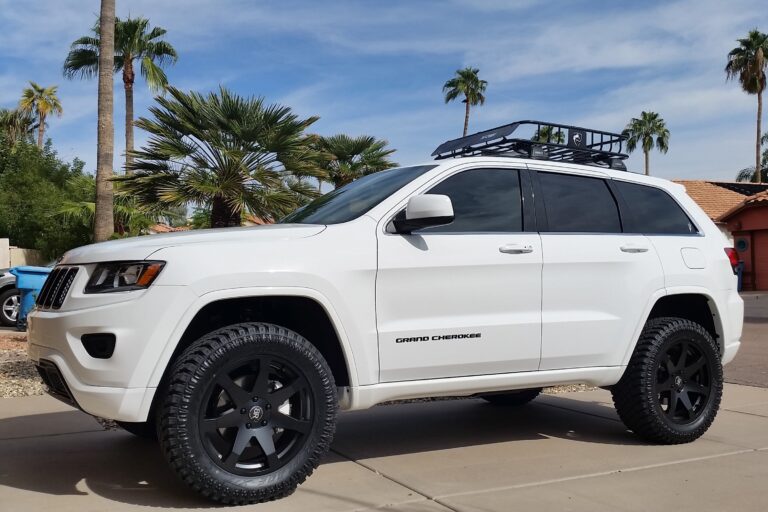89 Jeep Cherokee For Sale: Your Comprehensive Guide to Acquiring an Off-Road Icon
89 Jeep Cherokee For Sale: Your Comprehensive Guide to Acquiring an Off-Road Icon jeeps.truckstrend.com
The year 1989 might seem like a distant past in automotive terms, but for enthusiasts and off-road adventurers, the 1989 Jeep Cherokee (XJ) remains a highly sought-after vehicle. More than just an old SUV, the ’89 Cherokee represents a unique blend of rugged capability, simple mechanics, and timeless design that continues to capture hearts. If you’re considering an "89 Jeep Cherokee for sale," you’re not just looking for a mode of transport; you’re seeking a piece of automotive history renowned for its legendary reliability and unparalleled off-road prowess. This comprehensive guide will navigate you through everything you need to know about finding, evaluating, and owning one of these remarkable machines.
Why an ’89 Cherokee? The Enduring Appeal of the XJ
89 Jeep Cherokee For Sale: Your Comprehensive Guide to Acquiring an Off-Road Icon
The Jeep Cherokee XJ, produced from 1984 to 2001, is often lauded as one of the greatest SUV designs of all time. The 1989 model year falls squarely within the era that solidified its reputation. Its appeal stems from several key factors:
- Unibody Construction: Unlike many truck-based SUVs of its era, the XJ pioneered a unibody design, offering a lighter weight and more car-like ride without sacrificing rigidity or off-road capability.
- Legendary 4.0L Inline-Six Engine: The primary engine option for the ’89 Cherokee was the venerable 4.0-liter AMC inline-six. Known for its bulletproof reliability, ample torque, and simple design, this engine is a workhorse that can endure hundreds of thousands of miles with proper maintenance.
- Robust Drivetrain Options: With options like the sturdy AW4 automatic transmission and the highly capable NP231 or NP242 transfer cases, the ’89 XJ offered serious four-wheel-drive capability right off the showroom floor.
- Simplicity and Serviceability: The XJ’s relatively simple mechanical and electrical systems make it a favorite for DIY mechanics. Parts are abundant and affordable, and its straightforward design means many common issues can be tackled with basic tools.
- Aftermarket Support: A vast aftermarket industry exists for the XJ, offering everything from lift kits and heavy-duty bumpers to performance upgrades, making it an ideal platform for customization.
- Classic Status and Affordability: While prices are slowly climbing for well-preserved examples, the ’89 XJ still offers incredible value for its capabilities, making it an accessible entry point into the world of classic Jeeps and serious off-roading.

Key Features and Specifications of the 1989 Model Year
The 1989 Jeep Cherokee saw minor refinements over previous years, largely solidifying its core strengths.
- Engine: The dominant engine was the 4.0L (242 cubic inch) AMC Inline-Six, producing around 177 horsepower and 224 lb-ft of torque. A 2.5L AMC inline-four was also available, but less common and less desirable for most buyers due to lower power output.
- Transmissions:
- AW4 Automatic: A highly durable and reliable 4-speed automatic transmission manufactured by Aisin-Warner. This is the most common and generally preferred option.
- AX15 Manual: A 5-speed manual transmission, also very robust, but less frequently found.
- Transfer Cases:
- New Process NP231 "Command-Trac": Part-time 4WD with 2WD High, 4WD High, and 4WD Low. Ideal for serious off-roading.
- New Process NP242 "Selec-Trac": Full-time 4WD with 2WD High, Full-Time 4WD High, Part-Time 4WD High, and Part-Time 4WD Low. Offers more versatility for varying road conditions.
- Axles: Typically Dana 30 front and Dana 35 or optional Chrysler 8.25 rear (the 8.25 is stronger and more desirable).
- Suspension: Leaf springs in the rear and coil springs with radius arms in the front, providing a good balance of articulation and road manners.
- Body Styles: Available in 2-door and 4-door configurations. The 4-door is more practical, while the 2-door offers a slightly sportier look.


What to Look For When Buying an ’89 Jeep Cherokee (Buyer’s Guide)
Purchasing a vehicle that’s over 30 years old requires a keen eye and a thorough inspection. Here’s what to prioritize:
- Rust: This is the absolute number one concern.
- Unibody Frame Rails: Check thoroughly, especially near the rear leaf spring mounts and front control arm mounts. Significant rust here is a deal-breaker.
- Rocker Panels and Floorboards: Common rust spots, particularly on models from regions with road salt.
- Door Sills, Fender Flares, and Hatchback: Inspect for surface rust or bubbling paint.
- Undercarriage: Look for any signs of extensive rust on suspension components, axles, and exhaust.
- Engine (4.0L I6):
- Oil Leaks: Common from the valve cover, oil filter adapter, and rear main seal. Minor leaks are often manageable; severe leaks indicate neglect.
- Cooling System: Check the radiator, water pump, thermostat housing, and hoses for leaks or corrosion. Overheating is an XJ killer.
- Exhaust Manifold: Listen for ticking noises, especially on cold starts, which indicate a cracked exhaust manifold (a very common issue).
- Fluid Levels and Condition: Check engine oil, coolant, power steering, and brake fluid.
- Transmission (AW4 Automatic):
- Smooth Shifting: Test drive and ensure it shifts smoothly through all gears without harsh jerks or slipping.
- Fluid Condition: Check the transmission fluid; it should be red, not brown or burnt-smelling.
- Transfer Case (NP231/NP242):
- Engagement: Test all 4WD modes (2H, 4H, 4L, Full-Time 4H if NP242). Listen for grinding or clunking.
- Leaks: Check for fluid leaks around the seals.
- Suspension and Steering:
- "Death Wobble": This violent steering wheel shimmy at highway speeds is common but fixable. It indicates worn steering components (tie rod ends, drag link, track bar) or suspension bushings. Look for evidence of recent replacement.
- Shocks and Springs: Check for leaks on shocks and sagging springs.
- Bushings: Inspect control arm and leaf spring bushings for cracking or wear.
- Electrical: Test all lights, wipers, power windows (if equipped), radio, and gauges. XJs can have quirky electrical issues, so ensure the basics work.
- Interior and Exterior: Assess the overall condition. Are seats torn? Is the headliner sagging? Is the paint faded or peeling? These are cosmetic but can indicate overall care (or lack thereof).
- Documentation: Ask for maintenance records. A well-documented vehicle suggests a responsible owner. Verify the title is clean and matches the VIN.
- Pre-Purchase Inspection (PPI): If you’re serious, especially for a higher-priced example, have a trusted mechanic (preferably one familiar with older Jeeps) perform a PPI.
Common Modifications and Upgrades
One of the greatest joys of owning an XJ is the ease with which it can be customized.
- Lift Kits: Ranging from 1.5-inch budget boosts to 6.5+ inch long-arm systems, lifts are popular for increasing ground clearance and accommodating larger tires.
- Larger Tires: Often paired with lift kits, larger all-terrain or mud-terrain tires dramatically improve off-road traction and capability.
- Bumpers and Armor: Aftermarket steel bumpers, rock sliders, and skid plates protect the vehicle and allow for winches and recovery points.
- Gearing: For those running significantly larger tires, re-gearing the axles can restore lost power and improve drivability.
- Lighting: Upgraded headlights (LED or HID) and auxiliary off-road lights are common.
- Engine Performance: Intake and exhaust upgrades, or more advanced modifications like stroker kits, can boost power.
- Interior Upgrades: Modern stereo systems, improved seating, and storage solutions.
Pricing Your 1989 Jeep Cherokee
The price of an ’89 Jeep Cherokee for sale can vary dramatically based on condition, mileage, modifications, and geographic location. Expect to pay more for rust-free, well-maintained examples, especially those with desirable modifications.
| Condition | Estimated Price Range | Key Characteristics/Notes |
|---|---|---|
| Poor | $1,000 – $3,000 | Significant rust, major mechanical issues (engine/transmission), non-running or barely running, rough interior/exterior. Project vehicle or parts donor. |
| Fair | $3,000 – $6,000 | Visible rust (surface or minor perforation), cosmetic flaws, minor mechanical issues (leaks, worn suspension), high mileage. Driveable but needs work. |
| Good | $6,000 – $12,000 | Minimal to no significant rust, solid mechanics, well-maintained engine/transmission, minor cosmetic imperfections, average mileage (150k-250k). Good daily driver or solid base for mild off-road build. |
| Excellent | $12,000 – $25,000+ | Rust-free, meticulously maintained, low mileage for its age (under 150k), potentially restored or with desirable, professionally installed modifications. Collector quality or turn-key adventure vehicle. Prices for truly pristine examples can go higher. |
Important Considerations:
- Mileage: While the 4.0L is robust, lower mileage usually commands a higher price.
- Modifications: Well-executed, desirable modifications (quality lift, good tires, upgraded axles) can add value, but poorly done or extreme mods can detract.
- Location: Vehicles from dry, rust-free climates (Southwest US) will fetch higher prices.
- Documentation: Comprehensive service records add significant value.
The Ownership Experience: Pros and Cons
Owning an ’89 Cherokee is a unique experience.
Pros:
- Durability and Reliability: Especially the 4.0L engine.
- Off-Road Prowess: Stock, it’s capable; modified, it’s formidable.
- Simplicity: Easy to work on, abundant parts.
- Community: Huge, active online and local enthusiast communities.
- Affordability: Relatively low purchase price and parts cost.
- Customization Potential: A blank canvas for personalizing your rig.
- Classic Status: Gaining appreciation as a vintage SUV.
Cons:
- Fuel Economy: Don’t expect miracles; typically 15-20 MPG at best.
- Rust: The perennial enemy, especially in northern climates.
- Aging Components: Expect to replace wear items like suspension bushings, steering components, and sensors.
- Ride Comfort (Stock): Can be a bit rough, especially compared to modern SUVs.
- Safety Features: Lacks modern airbags, ABS, and stability control.
- Noise, Vibration, Harshness (NVH): It’s an old truck-like SUV; expect some road noise and vibrations.
Finding Your ’89 Cherokee: Where to Look
- Online Marketplaces: Craigslist, Facebook Marketplace, OfferUp are prime spots for private sellers. Be wary of scams and always inspect in person.
- Specialty Auction Sites: Bring a Trailer and Cars & Bids occasionally feature well-preserved XJs, often commanding higher prices.
- Jeep Forums and Enthusiast Groups: Dedicated XJ forums (like CherokeeForum.com) and Facebook groups often have classified sections where fellow enthusiasts sell their well-loved rigs.
- Local Classifieds/Word of Mouth: Sometimes the best deals are found offline.
- Used Car Dealerships (Rarely): Most dealerships won’t carry vehicles this old, but specialty classic or 4×4 dealers might.
Conclusion
The "89 Jeep Cherokee for sale" isn’t just an ad; it’s an invitation to own a piece of automotive legend. Its enduring appeal lies in its rugged simplicity, legendary 4.0L engine, and incredible off-road capability. While purchasing one requires careful inspection for common issues like rust and worn components, the rewards of ownership are immense. You’re not just buying a vehicle; you’re investing in an adventure machine, a highly customizable platform, and a piece of history that continues to inspire loyalty and passion. With proper research and a thorough inspection, your 1989 Jeep Cherokee can provide years of reliable service, whether on the pavement or far off the beaten path.
Frequently Asked Questions (FAQ)
Q1: Is the 4.0L engine in the ’89 Cherokee truly reliable?
A1: Yes, the 4.0L AMC inline-six is renowned for its incredible durability and reliability. With regular oil changes and cooling system maintenance, it can easily last 300,000 miles or more.
Q2: What is "death wobble" and how do I fix it?
A2: "Death wobble" is a violent, uncontrollable shaking of the steering wheel, usually occurring at highway speeds after hitting a bump. It’s caused by worn or loose steering and suspension components, primarily the track bar, tie rod ends, drag link, and control arm bushings. Fixing it involves diagnosing and replacing the worn parts, often starting with the track bar.
Q3: Are parts for an ’89 Cherokee still readily available?
A3: Absolutely. Due to the XJ’s long production run and popularity, aftermarket support is extensive. Most mechanical and many body parts are readily available new, and used parts are abundant from junkyards or online.
Q4: Is an ’89 Jeep Cherokee a good daily driver?
A4: It can be, especially if well-maintained and rust-free. However, be prepared for lower fuel economy, a less refined ride than modern SUVs, and a lack of modern safety features. For many, its charm and utility outweigh these drawbacks.
Q5: What kind of fuel economy can I expect?
A5: Most 4.0L XJs average between 15-20 miles per gallon, depending on driving style, terrain, and modifications (like larger tires or lift kits).
Q6: Can I easily lift an ’89 Cherokee for off-roading?
A6: Yes, the XJ is one of the easiest and most affordable vehicles to lift. A wide range of lift kits are available, from mild 2-inch lifts to extreme 6.5+ inch long-arm systems, catering to various off-road needs.
Q7: What’s the average lifespan of an ’89 Cherokee?
A7: With proper maintenance and rust prevention, the drivetrain (engine, transmission, transfer case) can last well over 250,000-300,000 miles. The lifespan of the body and frame largely depends on rust exposure. Many XJs are still on the road with high mileage, a testament to their robust design.


